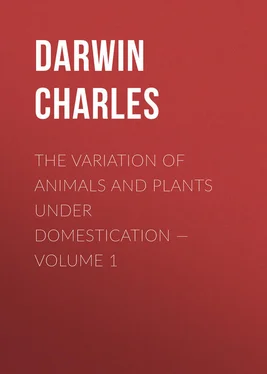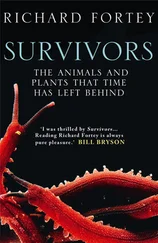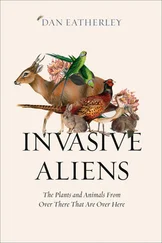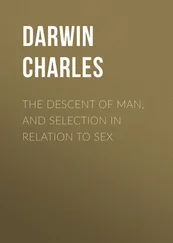Charles Darwin - The Variation of Animals and Plants under Domestication — Volume 1
Здесь есть возможность читать онлайн «Charles Darwin - The Variation of Animals and Plants under Domestication — Volume 1» — ознакомительный отрывок электронной книги совершенно бесплатно, а после прочтения отрывка купить полную версию. В некоторых случаях можно слушать аудио, скачать через торрент в формате fb2 и присутствует краткое содержание. Жанр: foreign_antique, foreign_prose, на английском языке. Описание произведения, (предисловие) а так же отзывы посетителей доступны на портале библиотеки ЛибКат.
- Название:The Variation of Animals and Plants under Domestication — Volume 1
- Автор:
- Жанр:
- Год:неизвестен
- ISBN:нет данных
- Рейтинг книги:5 / 5. Голосов: 1
-
Избранное:Добавить в избранное
- Отзывы:
-
Ваша оценка:
- 100
- 1
- 2
- 3
- 4
- 5
The Variation of Animals and Plants under Domestication — Volume 1: краткое содержание, описание и аннотация
Предлагаем к чтению аннотацию, описание, краткое содержание или предисловие (зависит от того, что написал сам автор книги «The Variation of Animals and Plants under Domestication — Volume 1»). Если вы не нашли необходимую информацию о книге — напишите в комментариях, мы постараемся отыскать её.
The Variation of Animals and Plants under Domestication — Volume 1 — читать онлайн ознакомительный отрывок
Ниже представлен текст книги, разбитый по страницам. Система сохранения места последней прочитанной страницы, позволяет с удобством читать онлайн бесплатно книгу «The Variation of Animals and Plants under Domestication — Volume 1», без необходимости каждый раз заново искать на чём Вы остановились. Поставьте закладку, и сможете в любой момент перейти на страницу, на которой закончили чтение.
Интервал:
Закладка:
CHAPTER 1.III
PIGS — CATTLE — SHEEP — GOATS.
PIGS BELONG TO TWO DISTINCT TYPES, SUS SCROFA AND INDICUS. TORFSCHWEIN. JAPAN PIGS. FERTILITY OF CROSSED PIGS. CHANGES IN THE SKULL OF THE HIGHLY CULTIVATED RACES. CONVERGENCE OF CHARACTER. GESTATION. SOLID-HOOFED SWINE. CURIOUS APPENDAGES TO THE JAWS. DECREASE IN SIZE OF THE TUSKS. YOUNG PIGS LONGITUDINALLY STRIPED. FERAL PIGS. CROSSED BREEDS.
CATTLE. ZEBU A DISTINCT SPECIES. EUROPEAN CATTLE PROBABLY DESCENDED FROM THREE WILD FORMS. ALL THE RACES NOW FERTILE TOGETHER. BRITISH PARK CATTLE. ON THE COLOUR OF THE ABORIGINAL SPECIES. CONSTITUTIONAL DIFFERENCES. SOUTH AFRICAN RACES. SOUTH AMERICAN RACES. NIATA CATTLE. ORIGIN OF THE VARIOUS RACES OF CATTLE.
SHEEP. REMARKABLE RACES OF. VARIATIONS ATTACHED TO THE MALE SEX. ADAPTATIONS TO VARIOUS CONDITIONS. GESTATION OF. CHANGES IN THE WOOL. SEMI-MONSTROUS BREEDS.
GOATS. REMARKABLE VARIATIONS OF.
The breeds of the pig have recently been more closely studied, though much still remains to be done, than those of almost any other domesticated animal. This has been effected by Hermann von Nathusius in two admirable works, especially in the later one on the Skulls of the several races, and by Rutimeyer in his celebrated Fauna of the ancient Swiss lake-dwellings. (3/1. Hermann von Nathusius 'Die Racen des Schweines' Berlin 1860; and 'Vorstudien fur Geschichte' etc. 'Schweineschadel' Berlin 1864. Rutimeyer 'Die Fauna der Pfahlbauten' Basel 1861.) Nathusius has shown that all the known breeds may be divided into two great groups: one resembling in all important respects and no doubt descended from the common wild boar; so that this may be called the Sus scrofa group. The other group differs in several important and constant osteological characters; its wild parent- form is unknown; the name given to it by Nathusius, according to the law of priority, is Sus indicus, of Pallas. This name must now be followed, though an unfortunate one, as the wild aboriginal does not inhabit India, and the best-known domesticated breeds have been imported from Siam and China.
First for the Sus scrofa breeds, or those resembling the common wild boar. These still exist, according to Nathusius ('Schweineschadel' s. 75), in various parts of central and northern Europe; formerly every kingdom (3/2. Nathusius 'Die Racen des Schweines' Berlin 1860. An excellent appendix is given with references to published and trustworthy drawings of the breeds of each country), and almost every province in Britain, possessed its own native breed; but these are now everywhere rapidly disappearing, being replaced by improved breeds crossed with the S. indicus form. The skull in the breeds of the S. scrofa type resembles, in all important respects, that of the European wild boar; but it has become ('Schweineschadel' s. 63-68) higher and broader relatively to its length; and the hinder part is more upright. The differences, however, are all variable in degree. The breeds which thus resemble S. scrofa in their essential skull characters differ conspicuously from each other in other respects, as in the length of the ears and legs, curvature of the ribs, colour, hairiness, size and proportions of the body.
The wild Sus scrofa has a wide range, namely, Europe, North Africa, as identified by osteological characters by Rutimeyer, and Hindostan, as similarly identified by Nathusius. But the wild boars inhabiting these several countries differ so much from each other in external characters, that they have been ranked by some naturalists as specifically distinct. Even within Hindostan these animals, according to Mr. Blyth, form very distinct races in the different districts; in the N. Western provinces, as I am informed by the Rev. R. Everest, the boar never exceeds 36 inches in height, whilst in Bengal one has been measured 44 inches in height. In Europe, Northern Africa, and Hindostan, domestic pigs have been known to cross with the wild native species (3/3. For Europe see Bechstein 'Naturgesch. Deutschlands' 1801 b. 1 s. 505. Several accounts have been published on the fertility of the offspring from wild and tame swine. See Burdach 'Physiology' and Godron 'De l'Espece' tome 1 page 370. For Africa 'Bull. de la Soc. d'Acclimat.' tome 4 page 389. For India see Nathusius 'Schweineschadel' s. 148.); and in Hindostan an accurate observer (3/4. Sir W. Elliot Catalogue of Mammalia 'Madras Journal of Lit. and Science' volume 10 page 219.), Sir Walter Elliot, after describing the differences between wild Indian and wild German boars, remarks that "the same differences are perceptible in the domesticated individuals of the two countries." We may therefore conclude that the breeds of the Sus scrofa type are descended from, or have been modified by crossing with, forms which may be ranked as geographical races, but which, according to some naturalists, ought to be ranked as distinct species.
Pigs of the Sus indicus type are best known to Englishmen under the form of the Chinese breed. The skull of S. indicus, as described by Nathusius, differs from that of S. scrofa in several minor respects, as in its greater breadth and in some details in the teeth; but chiefly in the shortness of the lachrymal bones, in the greater width of the fore part of the palate- bones, and in the divergence of the premolar teeth. It deserves especial notice that these latter characters are not gained, even in the least degree, by the domesticated forms of S. scrofa. After reading the remarks and descriptions given by Nathusius, it seems to me to be merely playing with words to doubt whether S. indicus ought to be ranked as a species; for the above-specified differences are more strongly marked than any that can be pointed out between, for instance, the fox and the wolf, or the ass and the horse. As already stated, S. indicus is not known in a wild state; but its domesticated forms, according to Nathusius, come near to S. vittatus of Java and some allied species. A pig found wild in the Aru islands ('Schweineschadel' s. 169) is apparently identical with S. indicus; but it is doubtful whether this is a truly native animal. The domesticated breeds of China, Cochin-China, and Siam belong to this type. The Roman or Neapolitan breed, the Andalusian, the Hungarian, and the "Krause" swine of Nathusius, inhabiting south-eastern Europe and Turkey, and having fine curly hair, and the small Swiss "Bundtnerschwein" of Rutimeyer, all agree in their more important skull-characters with S. indicus, and, as is supposed, have all been largely crossed with this form. Pigs of this type have existed during a long period on the shores of the Mediterranean, for a figure ('Schweineschadel' s. 142) closely resembling the existing Neapolitan pig was found in the buried city of Herculaneum.
Rutimeyer has made the remarkable discovery that there lived contemporaneously in Switzerland, during the Neolithic period, two domesticated forms, the S. scrofa, and the S. scrofa palustris or Torfschwein. Rutimeyer perceived that the latter approached the Eastern breeds, and, according to Nathusius, it certainly belongs to the S. indicus group; but Rutimeyer has subsequently shown that it differs in some well- marked characters. This author was formerly convinced that his Torfschwein existed as a wild animal during the first part of the Stone period, and was domesticated during a later part of the same period. (3/5. 'Pfahlbauten' s. 163 et passim.) Nathusius, whilst he fully admits the curious fact first observed by Rutimeyer, that the bones of domesticated and wild animals can be distinguished by their different aspect, yet, from special difficulties in the case of the bones of the pig ('Schweineschadel' s. 147), is not convinced of the truth of the above conclusion; and Rutimeyer himself seems now to feel some doubt. Other naturalists have also argued strongly on the same side as Nathusius. (3/6. See J.W. Schutz' interesting essay 'Zur Kenntniss des Torfschweins' 1868. This author believes that the Torfschwein is descended from a distinct species, the S. sennariensis of Central Africa.)
Читать дальшеИнтервал:
Закладка:
Похожие книги на «The Variation of Animals and Plants under Domestication — Volume 1»
Представляем Вашему вниманию похожие книги на «The Variation of Animals and Plants under Domestication — Volume 1» списком для выбора. Мы отобрали схожую по названию и смыслу литературу в надежде предоставить читателям больше вариантов отыскать новые, интересные, ещё непрочитанные произведения.
Обсуждение, отзывы о книге «The Variation of Animals and Plants under Domestication — Volume 1» и просто собственные мнения читателей. Оставьте ваши комментарии, напишите, что Вы думаете о произведении, его смысле или главных героях. Укажите что конкретно понравилось, а что нет, и почему Вы так считаете.












